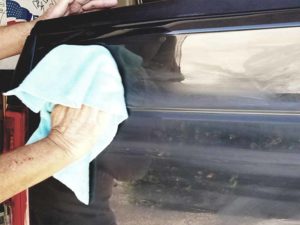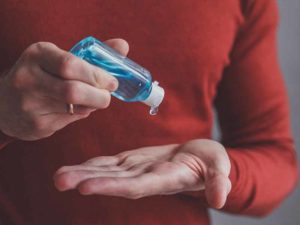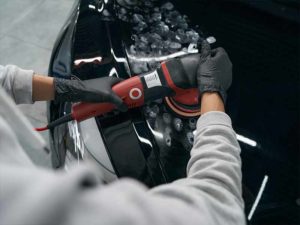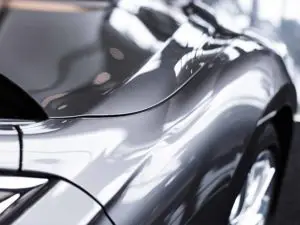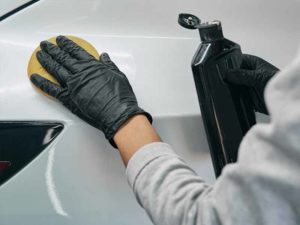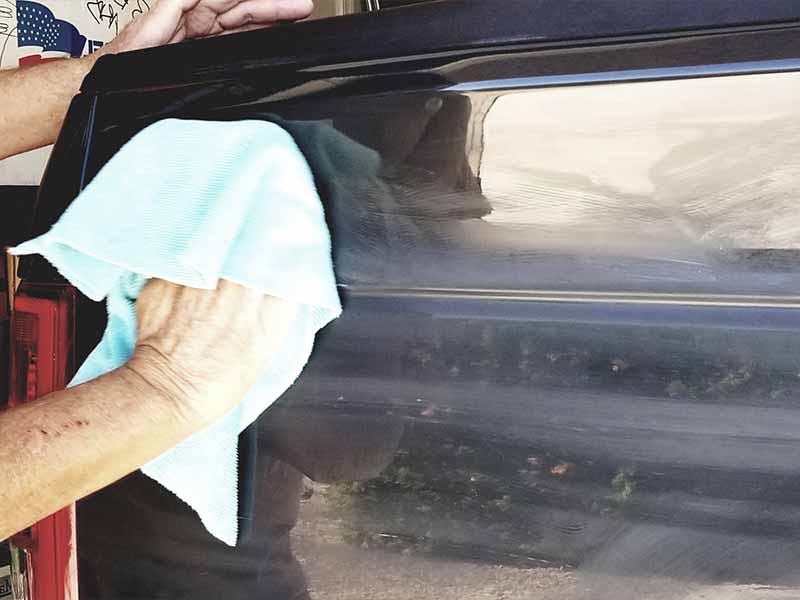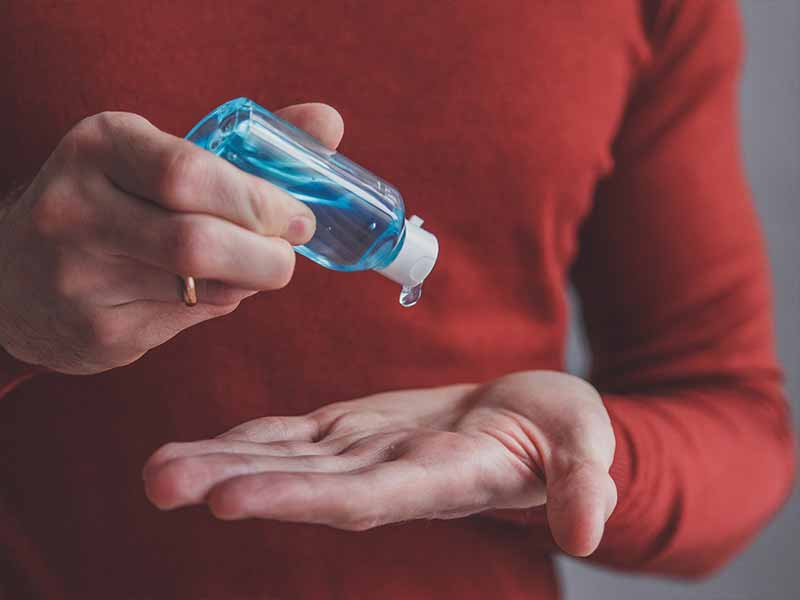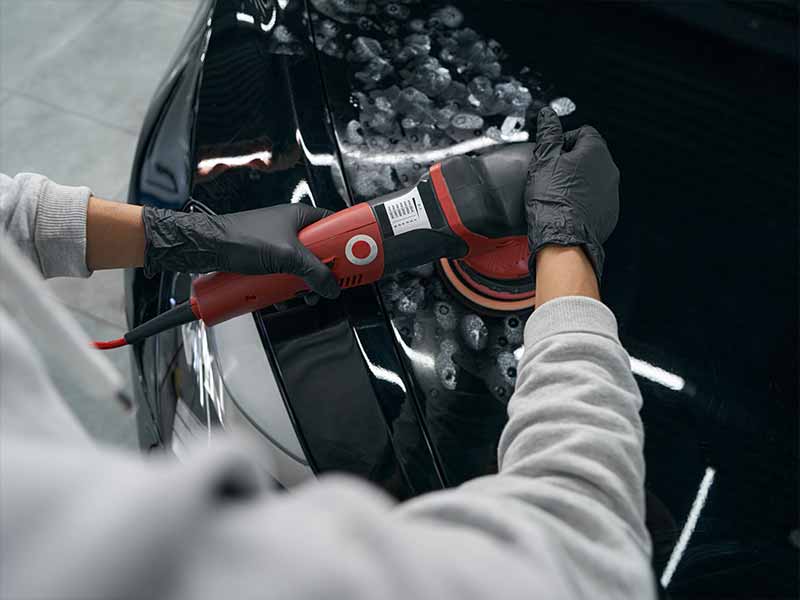Table of Contents
Whether it’s simple overspray or vandalism, spray paint can be removed from your car in several ways. Some of the methods we will suggest are actually quite easy and safe to attempt by anyone with a can-do attitude.
Others are more aggressive but still doable by even a novice car detailer. Let’s dive into the details.
How To Get Spray Paint Off A Car
It’s important to use the least aggressive method possible to remove spray paint from your car’s original paint. This is to protect the clear coat and minimize additional damage.
Below are the best methods to try ordered from least to most aggressive:
- Method 1: Wash Your Car’s Paint
Method 2: Isopropyl Alcohol
Method 3: Non Acetone Nail Polish Remover
Method 4: Lacquer Thinner
Method 5: Pressure Washer
Method 6: Clay Bar
Method 7: Compound And Polish

Method 1: Wash Your Car's Paint
The first thing you want to try to remove spray paint from your car’s original paint is to wash it. Whether this works or not, it’s not a wasted step. You’ll want to ensure that your car’s finish is completely clean from dirt and debris before trying any other methods.
It’s always important to wash your car or truck properly. Even if you’re doing so to try to remove spray paint. You don’t want to cause light scratches or swirl marks in the clear coat. For this reason, we ALWAYS recommend the 2 bucket method for washing a vehicle.
Don’t scrub when you wash your car. You want to make sure you don’t do more harm than good. Gently wiping with a microfiber cloth or wash mitt is the best approach.
Don’t expect much spray paint to be removed by simply washing. If the spray paint hasn’t dried yet you may be able to make the situation much better though.
Step 1
Rinse your vehicle thoroughly with a pressure washer to remove as much road grime and debris as possible.
Step 2
Use a foam cannon to coat the car or truck with a thick layer of pH neutral car wash shampoo and allow it to sit for several minutes to loosen the surface dirt.
Step 3
Coat your microfiber cloth or wash mitt with soapy water and gently wash the surface, starting from the top and working your way down. Rinse off your wash mitt or cloth occasionally and soap it back up.
Step 4
Once the entire car or truck has been completely washed, rinse it off with your pressure washer.
Step 5
Dry thoroughly with a good microfiber towel or car blower.
Like I mentioned earlier, don’t expect much from a simple wash. It may help you make some good headway toward removing some paint from the finish, but it is important to have your vehicle’s paint as clean as possible before moving on with the other methods.

Method 2: Isopropyl Alcohol
Isopropyl alcohol is a reasonably safe solvent to attempt to use to remove spray paint. It is frequently used by detailers to prepare paint for applying wax, paint sealant, or a ceramic coating. It’s great for removing oils and residue but it’s also capable of breaking down some spray paints.
As with any solvent, always test it in an inconspicuous location on your finish first to make sure it doesn’t react poorly to your car’s finish.
Step 1
Apply some isopropyl alcohol to a microfiber rag. Never apply a solvent directly to the car’s surface. You want to avoid alcohol from running down onto more sensitive plastics and rubbers that it could easily discolor or damage.
Step 2
Gently wipe the rag across the spray paint to allow the isopropyl alcohol to soak into the paint and begin breaking it down. Only allow it to dwell for a couple of minutes. Undiluted rubbing alcohol can begin to soften some clear coats if left on too long.
Keep an eye out for alcohol that may run down from the area it was applied onto. Catch it before it has a chance to come into contact with non-painted surfaces it could damage. You also want to minimize contact with the car’s paintwork to prevent it from doing damage if left on too long.
Step 3
Gently rub the area where the alcohol was applied to remove the spray paint. If the paint doesn’t come off easily from the car’s surface, don’t force it.
Step 4
Repeat steps 1, 2, and 3 on the same area if necessary. Always use light pressure to avoid scratching the clear coat and allowing the alcohol to do the work.
If you don’t have good results from using isopropyl alcohol, it’s time to step up to the next method.
Method 3: Non Acetone Nail Polish Remover
Non acetone nail polish remover will be a much gentler and safer alternative to acetone but more aggressive than rubbing alcohol. Again, we’re trying to use the safest method possible to remove spray paint from your car paint without damaging it.
As with any solvent, always test it in an inconspicuous location on your finish first to make sure it doesn’t react poorly to your car’s paintwork.
Step 1
Apply some nail polish remover to a microfiber rag. Never apply a solvent directly to the car’s surface. You want to avoid nail polish remover from running down onto more sensitive plastics and rubbers that it could easily discolor or damage.
Step 2
Gently wipe the rag across the spray paint to allow the nail polish remover to soak into the spray paint and begin breaking it down. Only allow it to dwell for a couple of minutes. Nail polish remover could begin to soften some clear coats if left on too long.
Keep an eye out for nail polish remover that may run down from the area it was applied onto. Catch it before it has a chance to come into contact with non-painted surfaces it could damage. You also want to minimize contact with the car’s factory paint to prevent it from doing damage if left on too long.
Step 3
Gently rub the area where the nail polish remover was applied to remove the spray paint. If the paint doesn’t come off easily from the car’s surface, don’t force it.
Step 4
Repeat steps 1, 2, and 3 on the same area if necessary. Always use light pressure to avoid scratching the clear coat and allowing the nail polish remover to do the work.
If you don’t have good results from using nail polish remover, it’s time to step up to the next method.
Method 4: Lacquer Thinner
Lacquer thinner is even more effective than non acetone nail polish removers, but it still should be fairly safe to use on your car’s factory paint.
Again, test it in an inconspicuous location on your finish first to make sure it doesn’t discolor the original paint.
Step 1
Apply some thinner to a microfiber rag. Never apply a solvent directly to the car’s paint. You want to avoid thinner from running down onto more sensitive plastics and rubbers that it could easily discolor or damage.
Step 2
Gently wipe the rag across the spray paint to allow the thinner to soak into the spray paint and begin breaking it down. Only allow it to dwell for a couple of minutes. Thinner could begin to soften some clear coats if left on too long.
Keep an eye out for thinner that may run down from the area it was applied onto. Catch it before it has a chance to come into contact with non-painted surfaces it could damage. You also want to minimize contact with the car’s original paint to prevent it from doing damage if left on too long.
Step 3
Gently rub the area where the thinner was applied to remove the spray paint. If the paint doesn’t come off easily from the car’s surface, don’t force it.
Step 4
Repeat steps 1, 2, and 3 on the same area if necessary. Always use light pressure to avoid scratching the clear coat and allowing the thinner to do the work.
If you’re unable to remove all of the spray paint by using lacquer thinner, it’s time to step up to the next method.
Method 5: Pressure Washer
Pressure washers are great tools for car detailing. They are able to apply a good amount of force while minimizing the chances of damaging your car’s clear coat if used properly.
You want to make sure you’re using a safe pressure and proper nozzle to avoid damaging the car’s original paint job.
Step 1
Point the end of your pressure washer with a 40º nozzle directly at the spray paint. You want to maintain a good distance from the vehicle at first.
Step 2
Slowly approach the spray painted area to better focus the pressure on the spray paint itself. Work the jet from the pressure washer back and forth and in a circular motion to loosen the stubborn spray paint from the car paint.
Step 3
If the 40º nozzle isn’t producing good results, swap it for a 25º nozzle. This more narrow nozzle will focus the pressure much better but it could potentially damage your finish so start further away from the vehicle and slowly move forward to find the minimum amount of force necessary to remove spray paint.
If the 25º nozzle still isn’t able to get spray paint off your finish you may want to consider stepping up to a 15º nozzle. This should be considered a last result since the 15º nozzle is extremely aggressive. If you have a pressure washer that is gas-powered or a particularly powerful electric pressure washer, you may not want to attempt using this narrow of a nozzle.
Step 4
If you’re seeing good progress, begin working on all of the spray paint and remove as much of it as you can with the water.
With some luck, the pressure should begin forcing the spray paint away from the finish. You may not be able to get all of the paint off the car’s body but hopefully it can do the bulk of the work.
If you still haven’t been able to get all the spray paint off your car, it’s time to step up to the next method.
Method 6: Clay Bar
There’s something satisfying about using car detailing clay. It does an excellent job of producing a super smooth finish and removes a surprising amount of contaminants and impurities from the surface of your car’s clear coat.
It’s not practical to use to remove spray paint from a car alone, but it’s ideal as a product pull small bits of paint from a car as it gently glides across the surface. If you’ve made a good amount of headway by this point, and you mostly likely have, it’s a great last step to pull off those last stubborn flecks safely.
Step 1
Thoroughly spray clay lubricant on a 1 foot square area you’d like to begin working on.
Step 2
Pull off a piece of from the detailing clay bar and make a flat circular shape with it.
Step 3
Gently glide the clay bar across the surface you’ve lubricated with the lubricant. If you feel the clay bar catching on the surface, spray more lubricant onto the area.
Step 4
As the detailing clay pulls contaminants and spray paint off the car and gets dirty, you need to flip the clay to the clean side to avoid potentially scratching the finish. You can also knead the clay to embed the dirt and grit into the clay and expose fresh clay. Eventually you’ll need to pull off a new piece from the block of detailing clay.

Method 7: Compound And Polish
The most aggressive method of removing spray paint from a car is using a rubbing compound or polish to essentially grind away the spray paint as well as a bit of the clear coat from the surface of your car’s paint job.
This won’t damage your vehicle’s paint since the clear coat is a sacrificial layer manufacturer’s apply as the last coat of paint on your finish. It’s designed to allow you to polish away a bit from the surface to remove scratches and embedded contaminants. The catch is that this protective layer is extremely thin and you don’t want to remove any unless absolutely necessary.
Step 1
Apply rubbing compound to a polishing pad and begin using small circular motions on the affected area. If you’re dealing with a very large amount of spray paint you’ll probably want to use a dual action polisher to make the job more manageable.
Step 2
Once satisfied with the results from the rubbing compound you’ll need to restore the shine that the compound dulled with a polish. Grab a fresh pad, preferably a softer firmness designed for polishing, and apply some polish.
Repeat the same process you performed with the rubbing compound with the polish to restore the gloss and shine.
Step 3
Buff away the residual polish and inspect your results.

Helpful Links
Conclusion: How To Get Spray Paint Off A Car
If by this point you haven’t been able to get spray paint removed from your car’s finish it may be time to call in the professionals. One of these methods is almost certain to work though.
Car owners will have varying levels of skill and willingness to attempt some of these methods, but they will get the job done if you are an accomplished do it yourselfer.
Good luck and happy detailing.
